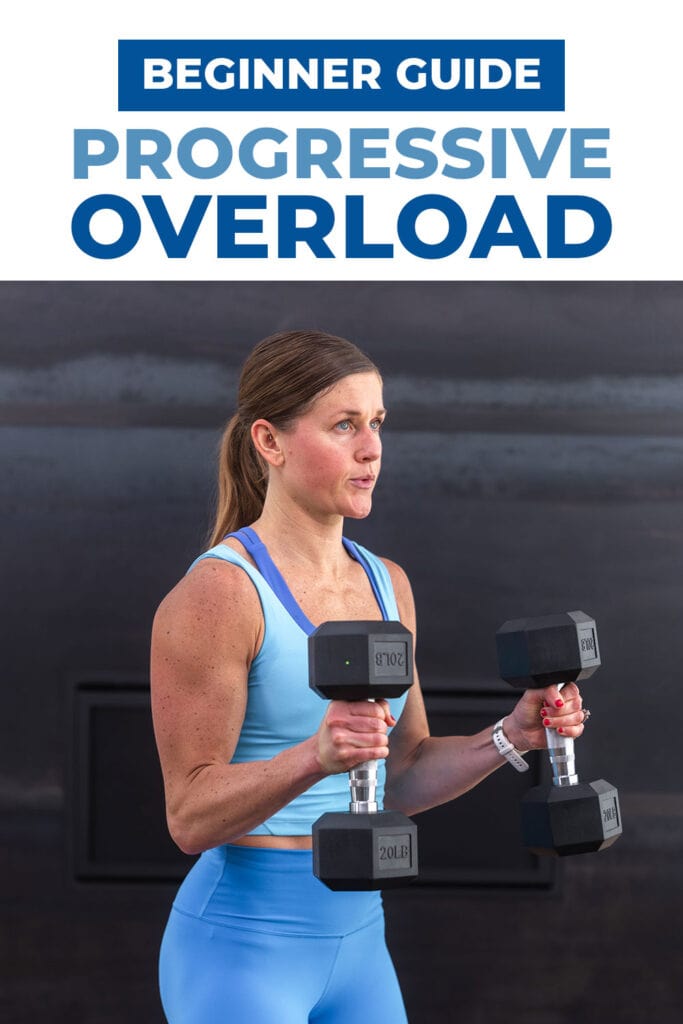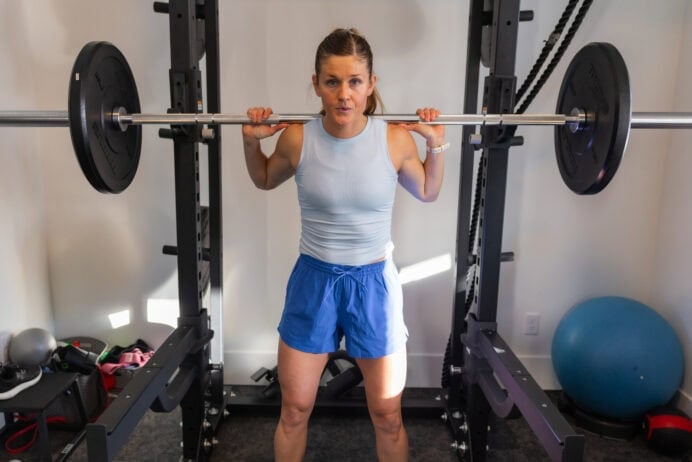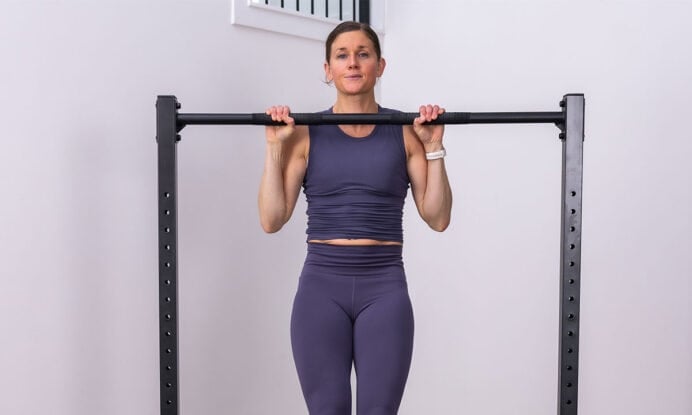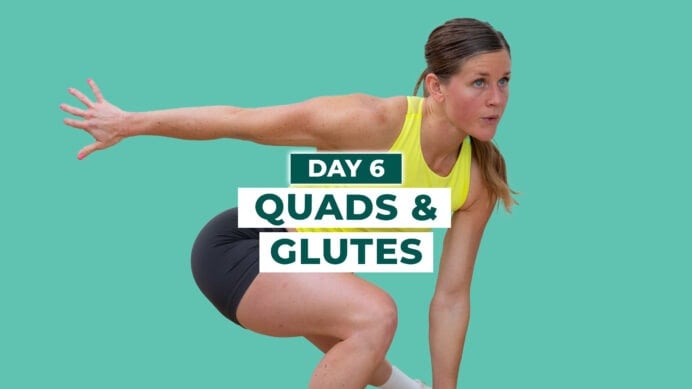
What Is Progressive Overload?
Progressive overload is a type of strength training that involves gradually increasing the intensity or difficulty of your workouts over time. By implementing progressive overload, you can consistently build more muscle and improve your endurance.
Quick Links:
I started seeing the best results from my strength training workouts when I started implementing progressive overload training.
Whether you’re new to fitness or a seasoned athlete, you’ve probably heard the term “progressive overload.” This type of training doesn’t just apply to bodybuilding and gym workout routines. In fact, if you’ve done my workout programs, you’ve actually implemented progressive overload!
The Principle of Progression means that you are gradually and consistently increasing the intensity of your workouts over time. Typically, this increase is kept within 10% or less each week to allow for a gradual adaptation while minimizing the risk of injury.
You can progressively overload in a variety of ways – by increasing the weights you’re using, increasing the number of reps you complete or even by decreasing your rest time between sets. At the end of the day, “progressive overload” just means that you’re finding a way to make your workout more challenging.
Your body adapts to resistance training. By gradually increasing the intensity, volume or duration of your workouts, you’re challenging your muscles to grow stronger over time. This leads to muscle hypertrophy or muscle growth.
Without overloading, muscle growth will plateau. So, if you feel stalled in your progress or have noticed that you’re not feeling fatigued by the end of your sets, it’s a good sign that you’re ready to reassess the weights you’re using or your workout format.
Whether you’re trying to lift heavier weights or just get better at cardio, progressive overload is a super useful tool. It’s really helped me, and it can help you reach your goals, too.
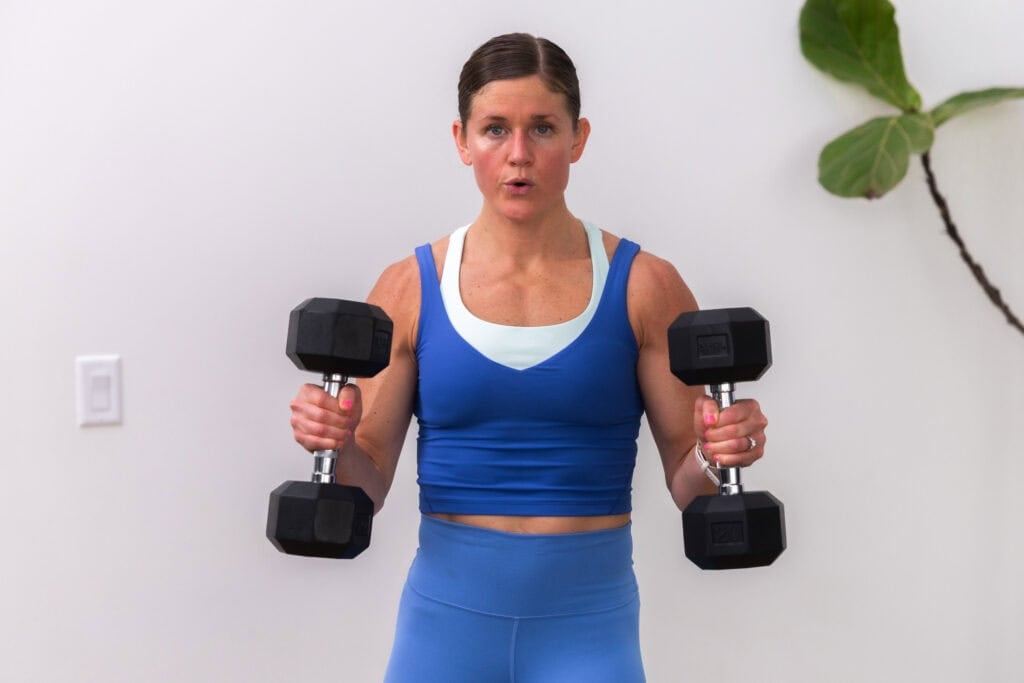
Benefits and What to Expect
There are many benefits of progressive overload, particularly when it comes to increasing strength and improving cardio endurance.
Physiologically, you’ll see improved cardiovascular and metabolic efficiency, as well as decreased body fat. By gradually increasing the demands on your muscles, you’ll increase tissue strength, muscle fibers and bone density. Without progressive overload, muscle growth can plateau and even lead to muscle atrophy over time.
You’ll also notice changes in performance when implementing progressive overload. Increased coordination, endurance, strength and power are all great benefits of progressively overloading your training. These improvements can ultimately leave you feeling more motivated, which can prevent fitness plateaus and help you keep your workouts more engaging.
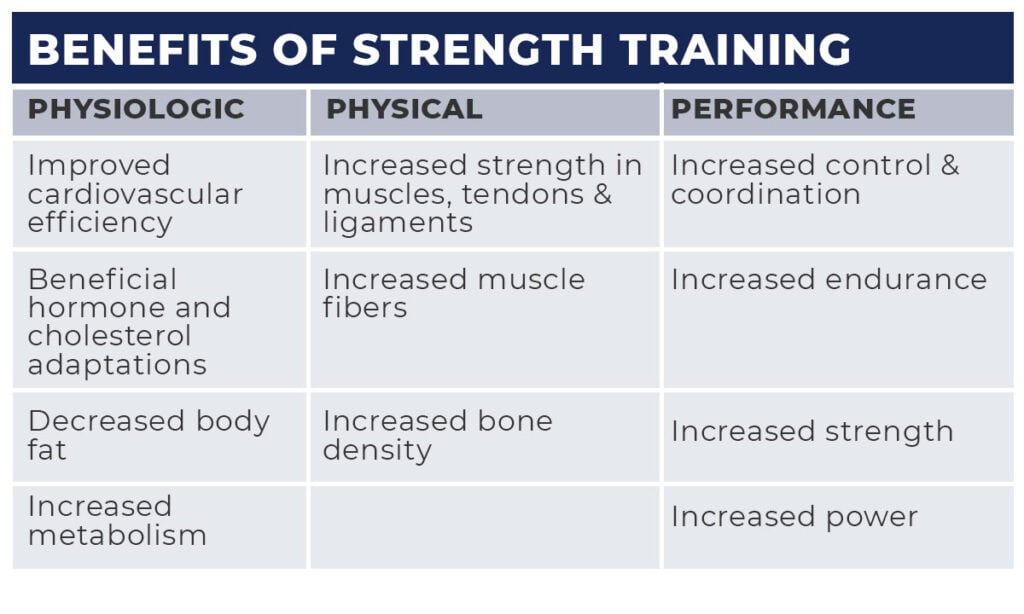
Here are some ways you might implement progressive overload in your strength training program:
- Increase weight: Start with a weight that allows you to complete your desired number of repetitions with proper form, and aim for a 2-5% increase each week.
- Increase repetitions: If you’re already lifting heavy, make your workouts more challenging by increasing reps.
- Increase sets: If you want to increase repetitions over time, start by increasing working sets.
- Decrease rest time: This is a great way to increase the intensity of your workouts.
- Increase range of motion: Engage more muscle fibers and increase strength while improving your mobility over time.
Each of these increases stress on the body in some way, which is what allows your body to adapt and rebuild stronger.
Drawbacks and Safety Concerns
Progressive overload can have drawbacks if not implemented correctly. Overloading too quickly or with too much weight can lead to injuries like fractures and sprains.
Overtraining can actually deter progress and potentially damage mental well-being. It’s really important to increase the intensity of your workouts very gradually. Make sure to prioritize proper form and listen to your body. You may need to incorporate more rest days if you start to feel very sore from your workout routine.
If you’re new to strength training and aren’t familiar with foundational exercises, I’d recommend working with a certified personal trainer who can assess your form and help you create a plan to increase intensity over time. You don’t want to make too many changes at once, as this could result in poor form and lead to injury.
Keep in mind that progressive overload can be applied to bodyweight training. If you’re a beginner and aren’t ready to use weights, you can still gradually increase the challenge to your muscles by increasing repetitions or sets of bodyweight exercises.
Avoid progressive overload exercises if you have pre-existing injuries, medical conditions or experience severe pain during exercises. Gradually increasing the intensity or difficulty of your workouts could exacerbate existing problems or cause new injuries if not done correctly.
Sample Workout Plans Using PO
Whether your goal is weight loss or greater muscle strength, the frequency of your progressions will vary based on your fitness level and goals. I generally recommend working through progressions every 2-4 weeks. However, beginners may tend to progress more quickly, while more advanced lifters may adapt to changes after longer periods of time.
Example Workout Programs
My workout programs are designed as progressive overload workout plans. Each program has a slightly different focus to cater to different fitness levels and goals. This is the order I recommend following as you progress through my signature workout programs:
- Beginner Workout Plan
- Strong 20
- Stronger 25
- SplitStrong 35
- Perform 20
- Build 30
- Overload 30
- MetCon 100
- HIITStrong 35
Each program should be repeated 2-3 times (making each 2-week program a 4-week or 6-week program).
By working through my programs in this order, you’ll gradually increase the intensity or volume of your training over time.
All of the workouts in my signature programs include guided videos and modifications for all fitness levels. The intensity level increases with each subsequent program, so there are options suitable for beginner, intermediate and advanced athletes.
Example Training Sessions
Choose a weight or rep range that allows you to complete your exercise with good form while still feeling challenged. For example, if you’re doing bicep curls on upper body day, choose a weight that allows you to comfortably perform 3 sets of 8-12 repetitions.
Increase the amount of weight by a small percentage each week or increase the number of repetitions per set by 1-2 reps each week. You might also add an additional set to each exercise or decrease your rest periods between sets.
Adding a drop set to your routine is another way to use this progressive training principle. Often, drop sets are used as a finisher after most working sets are complete. Say you’re completing squats on your lower-body day. You’ll use a heavy weight at the start of the drop set and decrease the load after each successive set. Ideally, you perform drop sets with little to no rest between each working set.
These gradual progressions or periodizations will keep you in the hypertrophy phase, which is where muscle growth happens. Muscular adaptations are needed to induce muscle damage and growth. As your muscles break down under strain, they rebuild themselves. This is ultimately what leads to increased muscle size.
You’ll probably notice some improvements in muscle definition and endurance within a few weeks. Noticeable strength gains will typically appear after at least two to three months of consistent training.
FAQs
No, building muscle generally requires progressive overload. Your body adapts to stress, so you need to continually increase the challenge on your body in order to see change. Progressive overload can be achieved through increasing weight, repetitions, sets or manipulating the tempo of exercises by increasing time under tension.
The 2-for-2 rule in progressive overload means increasing the weight when you can perform 2 more repetitions beyond your target rep count for 2 consecutive workouts. For example, if your goal is 10 reps and you can do 12 reps on your last set for 2 weeks in a row, you’re ready to increase the weight you’re using. The 2-for-2 rule helps ensure that you’re gradually increasing the difficulty of your workouts.
If you’re not feeling any fatigue in the last 2-3 reps of your sets and can comfortably perform more repetitions with the same weight, you’re ready to implement progressive overload. These are signs that the current weight you’re using or workout format is no longer challenging your muscle groups enough. That said, prioritize good form over adding more weight or reps, as poor form can lead to injury.
Let’s Get Stronger Together
Progressive overload is an important part of your fitness journey, regardless of your goals. Remember, this isn’t just about lifting heavier or running faster; it’s about consistently challenging yourself over time so that you can continue to improve and reach your fitness goals.
Keep in mind that small progressions make a big difference. Those extra reps, the slight increase in weight, that tiny bump in intensity – they all add up to monumental results. It’s about consistency, patience and trusting that every little step forward is a win.
Start where you are and do what you can. Commit to small, manageable increases and watch as they transform into bigger achievements. My workout programs are designed to take the guesswork out. As you progress from beginner plans to advanced strength plans, you’ll incorporate progressive overload. Remember that small progressions lead to big results – take it slow and know that progress is sure to follow your consistency.
More Fitness Education
Strength TrainingPin This Article on Understanding Progressive Overload
